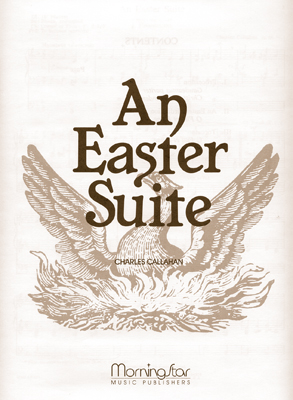- |
User Links
Christ ist erstanden Von der Marter alle
Christ ist erstanden Von der Marter alle
Author: Martin LutherTune: CHRIST IST ERSTANDEN
Published in 35 hymnals
Representative Text
Christ ist erstanden
von der Marter alle;
des solln wir alle froh sein,
Christ will unser Trost sein.
Kyrieleis.
Wär er nicht erstanden,
so wär die Welt vergangen;
seit daß er erstanden ist,
so lobn wir den Vater Jesu Christ!
Kyrieleis.
Halleluja, Halleluja,
Halleluja!
Des solln wir alle froh sein,
Christ will unser Trost sein.
Kyrieleis.
Source: Antwort Finden in alten und neuen Liedern, in Worten zum Nachdenken und Beten: evangelisches Gesangbuch (Bayern, Mitteldeutschland, Thüringen) #99
Author: Martin Luther
 Luther, Martin, born at Eisleben, Nov. 10, 1483; entered the University of Erfurt, 1501 (B.A. 1502, M.A.. 1503); became an Augustinian monk, 1505; ordained priest, 1507; appointed Professor at the University of Wittenberg, 1508, and in 1512 D.D.; published his 95 Theses, 1517; and burnt the Papal Bull which had condemned them, 1520; attended the Diet of Worms, 1521; translated the Bible into German, 1521-34; and died at Eisleben, Feb. 18, 1546. The details of his life and of his work as a reformer are accessible to English readers in a great variety of forms. Luther had a huge influence on German hymnody.
i. Hymn Books.
1. Ellich cristlich lider Lobgesang un Psalm. Wittenberg, 1524. [Hamburg Library.] This contains 8 German h… Go to person page >
Luther, Martin, born at Eisleben, Nov. 10, 1483; entered the University of Erfurt, 1501 (B.A. 1502, M.A.. 1503); became an Augustinian monk, 1505; ordained priest, 1507; appointed Professor at the University of Wittenberg, 1508, and in 1512 D.D.; published his 95 Theses, 1517; and burnt the Papal Bull which had condemned them, 1520; attended the Diet of Worms, 1521; translated the Bible into German, 1521-34; and died at Eisleben, Feb. 18, 1546. The details of his life and of his work as a reformer are accessible to English readers in a great variety of forms. Luther had a huge influence on German hymnody.
i. Hymn Books.
1. Ellich cristlich lider Lobgesang un Psalm. Wittenberg, 1524. [Hamburg Library.] This contains 8 German h… Go to person page >Text Information
| First Line: | Christ ist erstanden Von der Marter alle |
| Author: | Martin Luther |
| Source: | 12th century |
| Language: | German |
| Notes: | English translation: "Christ is arisen, risen from His suff'rings" by Margaret House; French translation: "Christ ressuscite, Hors de tout supplice" by Théo Preiss and Pierre Chazel; Polish translations: See "Chrystus Pan wstał z martwych" by Jerzy Heczko, "Chrystus Pan zmartwychwstał"; Swahili translation: See "Amefufuka" |
| Copyright: | Public Domain |
English
French
German
- Antwort Finden in alten und neuen Liedern, in Worten zum Nachdenken und Beten: evangelisches Gesangbuch (Bayern, Mitteldeutschland, Thüringen) #99
- Cantate Domino #30
- Deutsches Gesangbuch fuer die evangelisch-lutherische Kirche in den Vereinigten Staaten. Verbesserte Ausg. #d70
- Deutsches Liederbuch: Sammlung von Chorälen und Liedern für Schule und Haus #201
- Evang.-Lutherisches Gesangbuch #187
- Evangelisch-Lutherisches Gesang-Buch worin 500 der...fuer Gemeinen, welche sich zur unveraen ... Augsburgischen Confession #d51
- Evangelisch-Lutherisches Gesang-Buch: worin die gebräuchlichsten alten Kirchen-Lieder Dr. M. Lutheri und anderer reinen lehrer und zeugen Gottes, zur Befoerderung der wahren ... (2. verm. Aus.) #128
- Evangelisches Gesangbuch. Nach Zustimmung der Provinszialsznode vom Jahre 1884 zur Einfürung in der Provinz Brandenburg mit Genehmigung des Evangelischen Oberkirchenrats #145
- Evangelisches Kirchengesangbuch: Ausgabe für die evangelisch-lutherischen Kirchen Niedersachsens Hannover #75
- Evangelisches Kirchengesangbuch: Ausgabe für die Landeskirchen Rheinland, Westfalen und Lippe #75 10 shown out of 31
Notes
Suggested tune: CHRIST IST ERSTANDEN
=========================
Christ ist erstanden, Von der Marter alle. [Easter.] One of the earliest of German hymns, this is found in various forms as early as the 12th century, and four of these are given by Wackernagel, ii. pp. 43-44. It was sometimes used alone, sometimes as part of the liturgical services at Easter, as at the lighting of the lamps, and sometimes woven into the early Passion plays (compare its use by Goethe in Faust, pt. i.). Wackernagel, ii. pp. 726-732, gives also seventeen versions from the 15th century. The versions vary in length from 5 lines to 11 stanzas of 4 lines. (Cf. Hoffmann von Fallersleben's Geschichte des Deutschen Kirchenliedes, Hannover, 1861, pp. 63, 178, 181, 187, 202, &c.) Two have been translated into English.
1. Wackernagel, ii., No. 935, in 3 stanzas, from the Geistliche Lieder, Erfurt, 1531 (previously in Klug's Gesang-Buch, Wittenberg, 1529), and thence in V. Babst's Gesang-Buch 1545, and most succeeding hymn-books, and recently as No. 126 in the Unverfälschter Liedersegen, 1851. This form Luther held in such esteem that of it he said, "After a time one tires of singing all other hymns, but the ‘Christ ist erstanden' one can always sing again." The only translation in common use is:—
Now is Christ risen, by A. T, Russell, in his Psalms & Hymns, 1851, Appendix, No. 2.
Other translations are:—
(1) "Christ is now rysen agayne," by Bp. Coverdale, 1539 (Remains, 1846, p. 563). (2) "The Lord is risen, and gone before," by Miss Fry, 1845, p. 70.
ii. Wackernagel, ii., No. 39, from a Munich manuscript of the 15th century. In 9 lines. Translated as:—
"Christ the Lord is risen, Out of," by Miss Winkworth, 1869, p. 37. [Rev James Mearns, M.A.]
--John Julian, Dictionary of Hymnology (1907)
Tune
CHRIST IST ERSTANDENCHRIST IST ERSTANDEN is derived from the twelfth-century chant melody for "Victimae Paschali laudes" (which also produced CHRIST LAG IN TODESBANDEN, 398). The tune was first published in Joseph Klug's (PHH 126) Geistliche Lieder (1533). This ancient tune, originally in Dorian mode, consists of sever…
[Christus ist erstanden von dem Martertod]


 My Starred Hymns
My Starred Hymns



